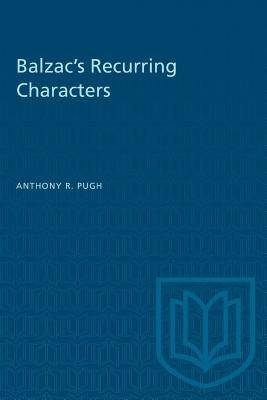
Je cadeautjes zeker op tijd in huis hebben voor de feestdagen? Kom langs in onze winkels en vind het perfecte geschenk!
- Afhalen na 1 uur in een winkel met voorraad
- Gratis thuislevering in België vanaf € 30
- Ruim aanbod met 7 miljoen producten
Je cadeautjes zeker op tijd in huis hebben voor de feestdagen? Kom langs in onze winkels en vind het perfecte geschenk!
- Afhalen na 1 uur in een winkel met voorraad
- Gratis thuislevering in België vanaf € 30
- Ruim aanbod met 7 miljoen producten
Zoeken
Omschrijving
There has never been an accurate, comprehensive account of the origin, development, and significance of Balzac's use of recurring characters in the many volumes of the Comedie humaine, although the device is well recognized and such a study has long been deemed essential by Balzac scholars.
One cannot read far in the Comedie without encountering characters whom one has met in other novels. Balzac did not introduce recurring characters until after he had written thirty of forty stories, but he kept revising his work from one printing or edition to the next so that earlier stories have as many of the recurring characters as the later ones. Professor Pugh traces the use of the device and unravels its complexities over the whole of Balzac's career by providing a year-by-year account of the author's struggles between 1829 and 1847 to unify his fictional world of some 3,000 characters.
This study illuminates the genesis of several novels and sheds totally new light on the validity of the device, by enabling us for the first time to distinguish between examples which belong to the original creative urge, and those introduced during later revisions.
The book takes into account the most recent studies of individual Balzac novels, and is unique in the range and thoroughness of its investigation. All serious students of Balzac will need to consult this reference work.
One cannot read far in the Comedie without encountering characters whom one has met in other novels. Balzac did not introduce recurring characters until after he had written thirty of forty stories, but he kept revising his work from one printing or edition to the next so that earlier stories have as many of the recurring characters as the later ones. Professor Pugh traces the use of the device and unravels its complexities over the whole of Balzac's career by providing a year-by-year account of the author's struggles between 1829 and 1847 to unify his fictional world of some 3,000 characters.
This study illuminates the genesis of several novels and sheds totally new light on the validity of the device, by enabling us for the first time to distinguish between examples which belong to the original creative urge, and those introduced during later revisions.
The book takes into account the most recent studies of individual Balzac novels, and is unique in the range and thoroughness of its investigation. All serious students of Balzac will need to consult this reference work.
Specificaties
Betrokkenen
- Auteur(s):
- Uitgeverij:
Inhoud
- Aantal bladzijden:
- 544
- Taal:
- Engels
- Reeks:
Eigenschappen
- Productcode (EAN):
- 9781487580780
- Verschijningsdatum:
- 15/12/1974
- Uitvoering:
- Paperback
- Formaat:
- Trade paperback (VS)
- Afmetingen:
- 156 mm x 234 mm
- Gewicht:
- 830 g

Alleen bij Standaard Boekhandel
+ 203 punten op je klantenkaart van Standaard Boekhandel
Beoordelingen
We publiceren alleen reviews die voldoen aan de voorwaarden voor reviews. Bekijk onze voorwaarden voor reviews.









